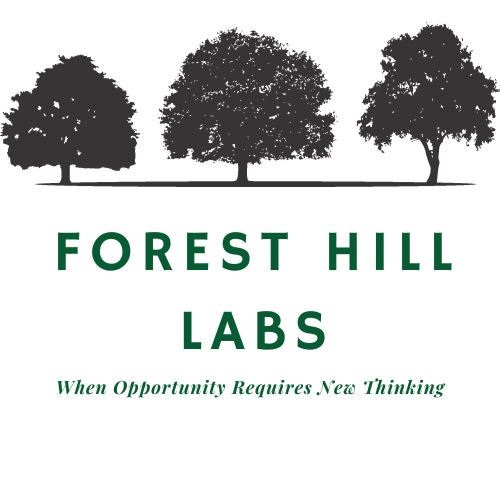The Rise of Consumer-Centric Care: How AI is Reimagining Healthcare Access and Delivery
By Robert J. Horne, John Martin, Dr. Debbie Robertson Ph.D., and Jim Bialick
PART 8: Disruptive Innovations in Health Series / Published March 16, 2023
Key Takeaways
Artificial Intelligence (AI) as a medical workforce alternative represents a once-in-a-generation opportunity to alleviate existing and worsening labor shortages in the healthcare market while saving public and private payers money.
This technology offers consumers advantages over the existing healthcare business model through:
More frequent interactions with the medical system beyond what human medical workforces can supply and for lower costs; and
A more personalized user experience, extracting consumers from population and subpopulation health approaches into a unique care pathway tailored to their needs and that grows with them as they age.
We anticipate that the advantages afforded by AI to consumers and payers alike will foster a new marketplace of consumer-enabling products and fuel an explosion in digitally enabled insurance benefits.
Introduction: Reimagining Healthcare Access and Delivery
Artificial Intelligence (AI) can play a significant and cost-effective role as a medical workforce alternative. AI can also help create new opportunities for patients to engage with their health and wellness by facilitating a new and more meaningful healthcare encounter established around daily use for a monthly fee rather than predicated on a fee-for-service basis. This technology could allow individuals a consistent and ongoing insight into their health, actionable advice on demand, and a means of filling in gaps between physician encounters without the costs of seeing a medical provider daily. A reimagined consumer-centric approach to healthcare access and delivery, enabled by AI, could fundamentally center decision-making on the patient as a healthcare consumer and equip them with tools to engage medical professionals and others directly and easily when necessary.
The authors are initiating two series on the future of consumer-centric healthcare in America and AI's role in the healthcare market. We hope this article and the coming series will stimulate public discussions on what we see as the potential reimagined healthcare market in the near future. Subsequent articles in each series will explore key legal, regulatory, and other issues vital for turning these ideas into reality.
Of note, this article is a continuation of previous series on the emerging role of digital health technology in healthcare and a new series we have initiated intended to reimagine mental and behavioral health policy. Those series can be found here.
Workforce Alternatives: AI and Digital Medical Services
Previous Kairos articles have explored the benefits of digital therapies as alternative offerings under public and private health insurance and highlighted the current M&A focus on companies with medical workforces. The inability of the U.S. to train enough doctors and nurses to meet the existing nationwide marketplace suggests workforce alternatives like Artificial Intelligence, which can replicate some of the actions of medical professionals, will increasingly become a reality, particularly if consumer demand for their data continues to increase.
Consider some of the current uses of technology in healthcare. For example, clinical (CDS) is a form of artificial intelligence that medical professionals use to aid patient care. Another gaining traction in healthcare is AI-enabled virtual assistants for both patients and medical providers. Transcarent recently announced it was acquiring part of AI-focused primary care startup 98point6, which has developed an “AI chatbot that collects information from an individual and summarizes it for a human doctor who then takes over the chat.” The acquisition is intended to put AI “front and center” of the company’s goal to simplify patient healthcare by reducing the complexity of finding doctors who deliver high-quality care.
Beyond consumer access, AI is also improving the quality and accuracy of what human medically licensed professionals can provide. “Recent years have seen AI-based imaging technologies move from an academic pursuit to commercial projects. Tools now exist for identifying various eye and skin disorders, detecting cancers, and supporting measurements needed for clinical diagnosis […] Some of these systems rival the diagnostic abilities of expert pathologists and radiologists and can help alleviate tedious tasks (for example, counting the number of cells dividing in cancer tissue).”
The benefits of medical workforce alternative service providers, such as AI, and digital medical service alternatives, provide payers and policymakers a once-in-a-generation opportunity to get ahead of existing and worsening medical workforce shortages. These shortages are real and cannot be fixed by training new medical professionals alone because of the time and money required to train these workforces. In addition, areas of medical professional need like mental and behavioral health are especially troubling, with demands for medical services far greater than doctors available to see them. Clearly, alternatives will be needed.
Artificial Intelligence and the “New” Patient Engagement
Policymakers have for decades tried to encourage individual Americans to become more involved in their healthcare, resulting in an increased burden on medical professionals. It is, therefore, not surprising that the US is experiencing an increasingly severe medical workforce shortage. Digital medical providers and medical services acting as skilled labor alternatives have the potential to deliver enhanced consumer-centric care without burdening existing medical workforces. In addition, these alternatives can increase care while decreasing the per-unit costs of healthcare at the same time while also improving an individual’s ability to control more of their own healthcare experience.
Current data indicates that machine learning and AI use in healthcare can improve outcomes and lower costs, helping justify their use. Some leading digital medical service companies use AI as an opportunity for individual consumers to engage with their healthcare and wellness at no cost beyond a monthly user fee and often without needing to see a physician first. A policy silver bullet, so to speak.
The value of a personalized journey that exists between doctor visits is tremendous. Whether relating to physical or behavioral health, AI can offer a two-way engagement with individuals on their health data in ways that can personalize the overall experience for users. Over time, individualized care may guide users and providers away from broad population and subpopulation-based approaches toward a genuinely individual care pathway. For example, consider the benefits to those with poor mental health or seeking access to care in rural areas using Internet access. In addition, this technology's scalability allows every American to define and engage in a personalized care journey.
Conclusion
Artificial intelligence could bring about a new consumer-centric model for healthcare where individuals have greater control over their health and wellness while transforming the efficacy of products and services available in the healthcare market. The need for these technologies is clear: there is a disastrous shortage of digital medical providers and medical service alternatives, and broader concerns are coming out of Washington, DC, that labor shortages and increasing healthcare costs have made the status quo unsustainable, even in the near term.
Yet with all this potential, some genuine concerns over the unintended risks associated with AI use in healthcare exist that can blunt this potential. Therefore, innovative ideas and policymaker willingness to undertake a process of modernizing U.S. laws and regulations are needed. Future articles in the AI and consumer-centric series will explore new ways of considering this technology's legal and regulatory aspects, including coverage and reimbursement. Check back in the coming weeks for more on these topics.


